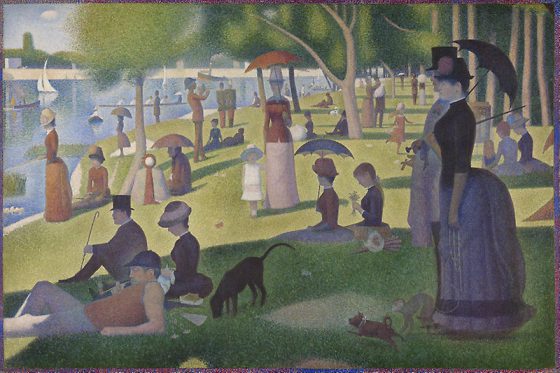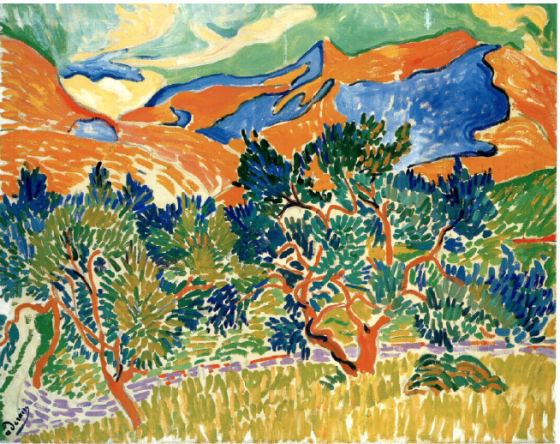Three Alternatives for the Final Exam
Art History taken by our majors and non-majors at introductory levels are offered both online and face to face. Our college serves students from ages 16 to 60, some dually enrolled in high school and in college, and from any one of the tri-county areas. Their socioeconomic levels cover a wide range, as do their academic goals; they cary from university transfer to certificate or degree programs for the work-force.
Learning objectives in these courses have students demonstrate, discuss, write about, and apply knowledge of historical perspectives, form, style, and content of Western and non-Western works. Institutional learning outcomes for communication and critical thinking include effective and appropriate demonstration of reflection, analysis, and synthesis.
The three alternate assignments that can be used in lieu of or in combination with final exams shown here are an exhibition catalog, a spoof or remake of an artwork, and a travel brochure.
History of Art II students curate a mock exhibit for a catalog, making related selections according to a theme such as Nature. This particular theme also allows students to address environmental issues, as per our college wide learning outcome of global socio-cultural responsibility. These three pages from a student catalog demonstrate an historical perspective of major landscapes, with brief reflection and analysis of style, form, and content.

Notes: This piece by Seurat give a twist to the Impressionist style. Although not prevalent, the work does involve themes of nature as the citizens in the work are in a part to take break from city life.

Notes: Mountains at Collioure exhibits classic Fauvism by using juxtaposing colors to create a bight and untraditional depiction of a rather traditional nature subject of trees and mountains.

Notes: O’Keefe (sic) manages to utilize modernism while infusing feminism in Red Cana (sic). On surface only seeming to be the inner workings of a flower. Georgia O’Keefe (sic) illustrates the sides of nature that people don’t normally see while also squeeing in feminine qualities to the flower.
Students might also address themes of Symbolism, or the Nude in their catalogs.
History of Art I students create a mock travel brochure, which they design as a world tour or pilgrimage that includes both art and architecture. Philosophy and religion often permeate non-western examples, also facilitating students’ understanding of global cultures as shown in these excerpts from travel assignments.
Students also realize the importance of the museum presence via the travel brochure project.
Art Appreciation students create a remake or postmodern take on an historical piece through both a paper and a presentation. This assignment could be expanded and made more comprehensive for Art History students.

Allegory of Prudence, Titian Allegory of DeNiro, collage
At my school we work to educate global citizens. These assignments thus simulate real world applications of the Business of Art; specifically Communications, Marketing, Design, and Tourism. Digital literacy is a learning outcome college-wide, as is effective communication, and global socio-cultural responsibility. These alternate projects provide students with learning opportunities that address these outcomes and are thereby transferrable for other courses in their chosen degree programs. Students are empowered and fully engaged by projects like these, which may be paired with exams or used stand-alone.
Although for whatever reason certain elements (images) for this article do not show up, I love the idea of the travel brochure for a final project. I have been looking for a good reflection exercise in lieu of a final exam for my History of Art I students, and am going to give this a try. Thanks for the great suggestion!
I had my History of Art I students make travel brochures for their final projects and it was Wonderful to read them! Students were clearly excited to share their favorites from the semester, and wrote with enthusiasm and an attention to detail that demonstrates how engaged they can be when given a little room to get creative. I am so grateful to Michele Wirt for sharing this idea!